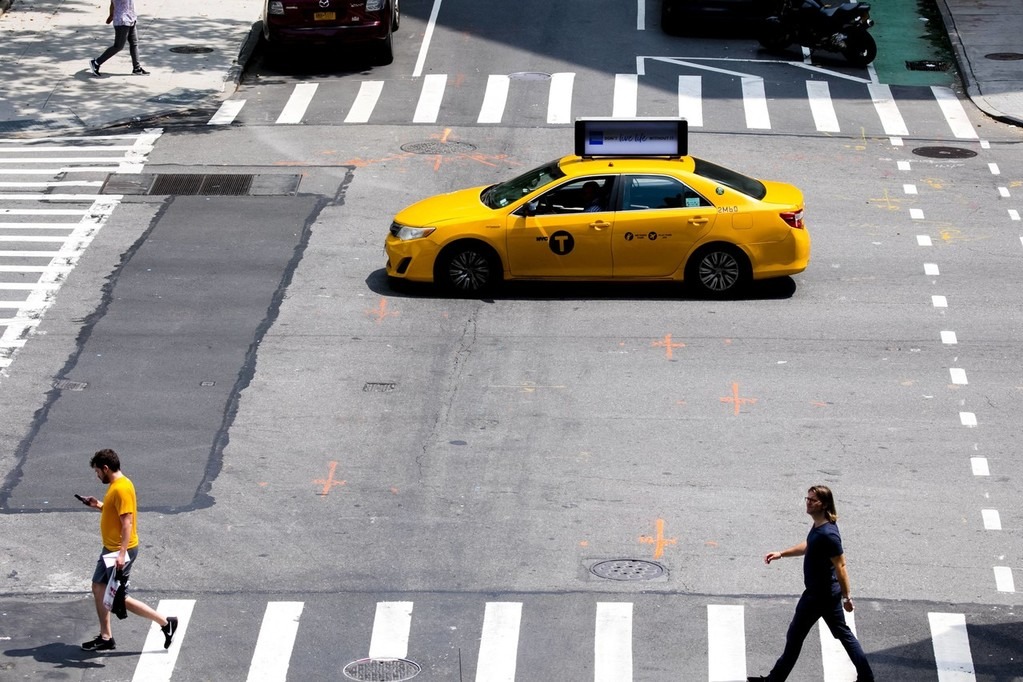Will Europe embrace robo taxis like US has?
By Barry He | China Daily | Updated: 2025-08-04 09:20
Driverless autonomous taxis are now commonplace in cities across the United States.
From San Francisco in California to Austin in Texas, robo taxi rides can now be booked with the tap of a phone.
While the US has rapidly adopted the technology that provides such futuristic services, Europe has remained intrigued, but cautious. Whether the continent is prepared to embrace the possibilities to the same degree as the US remains to be seen and is a decision for the policymakers, municipal transport operators, and public to make.
Europe's US counterparts have rolled out the technology at an ambitious and controversial rate. Tesla's launch of autonomous ride-hailing services earlier this year sparked global attention, with footage circulating online of vehicles drifting across lanes, braking abruptly, and sometimes even blocking traffic completely.
Waymo has also accelerated its operations, rolling out services from Phoenix in Arizona to San Francisco in California, with its taxis making the news for racking up parking fines and blocking emergency vehicles.
Such incidents are widely tolerated, in general, because of the assumption that trial and error from real-world situations will result in more reliable and safe services.
Europe, on the other hand, has been much more measured.
Pilot programs here are underway in several EU countries but deployment has been restricted to much smaller and specifically sanctioned areas.
Navya autonomous shuttles in Paris, France, are capable of ferrying passengers along designated routes, while in Hamburg, Germany, Volkswagen's MOIA program has gradually opened up a limited ride-hailing service.
Many EU states have passed legislation, such as Germany's Road Traffic Act, enabling autonomous vehicles to run, but under the watchful eye of remote supervisors who can step in and intervene at any time.
The contrast between the two attitudes found on either side of the Atlantic Ocean stems from both social and architectural factors. European cities are often much less reliant on cars and have much more extensive public transport networks. They also tend not to benefit from the grid layouts and wide roads often found in the US. AI sensors, therefore, tend to have much more trouble navigating European roads because of their twisty, medieval layouts.
Autonomous vehicles may be able to navigate a junction in the US state of Texas with ease, but the bedlam of the cycle lanes found in Amsterdam in the Netherlands, or the challenges of the UK's notorious roundabouts may prove to be a different beast entirely.
Public perception is also a factor, with surveys conducted by the EU's transport safety council indicating that, while interest exists, many Europeans still remain uneasy about relinquishing control of the wheel, at least until they see long-term reliability as proven, and trust earned.
Stricter regulation also plays a part. Vehicles such as the Tesla Cybertruck, while common in the US, have not become homologated into road-legal production cars in countries including the UK. Picky standards concerning headlights and overly sharp edges mean that some wannabe-owners, who have paid hundreds of thousands of pounds for their vehicles, have had them impounded by UK police.
But it is important to note that Europe will gain little if regulators get bogged down in bureaucracy. Autonomous ride-hailing has the potential to lower transport costs, reduce emissions, and free-up parking spaces and EU member states wishing to meet their climate change targets may find that delaying autonomous electric fleets could lead to them missing out on huge benefits.
Innovation must be balanced with public safety and draft EU legislation already explores liability frameworks and the standardization of traffic incident reporting protocol. Similar laws in the UK were due to be passed in 2026 but have since been delayed.
These challenges may frustrate a sector of the industry and forward-thinking consumers alike who are keen to reap the benefits of this futuristic new service.
So, regulators must strike a fine balance between keeping the industry happy and also protecting a skeptical public.
While the EU continues to move forward cautiously, and pilot programs sprout up across the continent, the bloc has an opportunity to not only learn from its experiments but also take note of the growing pains being experienced in autonomous ride-hailing sector in the US.
























